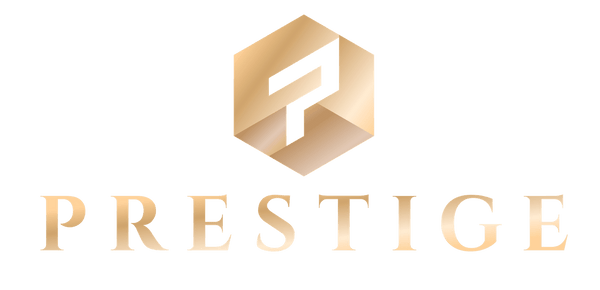Navigating the World of Custom-Made Branded Merchandise: Your Essential Manufacturing FAQ Guide
Custom-made branded merch is a fun and effective tool for brands, corporations and social media influencers to get their names out there and connect with their audience and fans.
Promotional branded swags and merch can make a very positive impact when done right. We have put together an easy to follow FAQ guide to navigating the production processes, and key considerations for creating high-quality tailored merchandise that aligns with your brand needs.
The following FAQ contains questions frequently posed by brand owners and marketing managers interested in producing branded merchandise and company promotional products.

I. The Stages of Manufacturing Process
The manufacturing process for custom merchandise typically involves several stages, such as design & development, material selection, production, and quality control.
Each of these stages plays a crucial role in ensuring the final product meets the desired specifications and quality standards:
Design & development: The design process begins with concept development and brainstorming. A thorough understanding of the target market, brand identity, and desired aesthetics is vital to create a design that resonates with the audience.
The design team starts off by using various digital tools and software to develop and refine the artwork, including sketches, 3D models, and prototypes or mockups.
Material Selection: The choice of material significantly impacts the appearance, durability, and cost of the final product. Factors to consider when selecting materials include the intended use of the product, environmental conditions, and budget constraints.
Some of the popular materials for custom-made merchandise include plastics, metals, fabrics, and ceramics, all of which offer distinctive properties, function and benefits.
Mass production: After finalizing the design and selected materials as well as completing the preproduction stage, the mass manufacturing procedure begins, until the production completes and all products are tested, packaged and shipped out.
Producing quality custom merchandise requires adhering to the specifications outlined in the product blueprints in order to precisely manufacture the intended product.
Quality Control: Ensuring consistent product quality is crucial for maintaining brand reputation and customer satisfaction. A stringent quality control process, including at least two stages of inspection, is essential to maintain consistency and detect defects. Reducing handmade procedures can also help standardize merchandise quality. These would be discussed further in section IV.
Quality control and inspection are of top priorities at Prestige. Our production managers inspect each product to identify and remove any defects before they are shipped out to our customers. We are uncompromising in our commitment to thorough quality inspection and control of the products that we are commissioned to manufacture.

Click here for some additional resources about the manufacturing process in general.
II. The Logic Behind the Minimum Order Quantity (MOQ) Requirement
Custom merchandise often demands the creation of new product molds to achieve unique shapes and structures. This process can be both expensive and time-consuming to execute and perfect.
Molds play a crucial role in shaping materials into specific forms during manufacturing. The costs and efforts of developing new molds tends to make it difficult for factories to accommodate small orders with limited profit margins.
To counterbalance the expenses linked to molds building and sample production, factories establish a Minimum Order Quantity (MOQ), ensuring they can generate adequate revenue from each production run.

Nevertheless, there are strategies to overcome this requirement, such as producing a single sample or selecting products that don't need new molds. A few examples include intricately carved crystal items or wooden products, precision laser-engraved items, handbags, garments, paper items, and there are numerous options available for lower order quantities.
Click here to check out other recommended resources about the topic.
III. Other Customization Options
Some of the pared down customization methods include screen printing, embroidery, and more. The choice of customization method depends on factors such as material, design, and budget.
Screen Printing: Screen printing is a popular and cost-effective method for customizing textiles, plastics, and other materials. It involves transferring a design onto the substrate using a mesh screen and ink. This technique is ideal for large-scale production, but it may not be suitable for highly detailed or multi-colored designs.

Embroidery: Embroidery involves stitching a design directly onto the fabric using a needle and thread. This method offers a high-quality, durable finish, but it can be more expensive and time-consuming than other manufacturing techniques.
Other Customization Methods: Additional options for customizing merchandise at lower quantity include digital printing, laser engraving, embossing and debossing. Each method has its benefits and limitations, so it's essential to carefully evaluate the best option for your specific design, choice of material, and budget.
IV. How to Ensure Consistent Product Quality in Mass Manufactured Orders
A stringent quality control process, including at least two main stages of inspection, is essential to maintain consistency and detect defects. Reducing handmade procedures can help standardize merchandise quality.
In-process Inspection: The first couple quality checks occur during the production process. This allows the manufacturer to identify and rectify issues before the product reaches the final stage.
Final Inspection: The second stage of quality control takes place after the manufacturing has been completed. This step involves a thorough examination of the final product to ensure it meets the required specifications and quality standards.
Quality Control Documentation: Maintaining detailed records of the quality control process, including inspection results and corrective actions, helps ensure transparency and accountability throughout the manufacturing process.

V. Choosing the Right Merchandising Agency or Manufacturer
Consider factors such as quality, turnaround time, and cost when selecting an agency or manufacturing partner. It's essential to find a partner that aligns with your brand values and can deliver consistent, high-quality products within your budget and timeline.
Reputation: Research potential manufacturers or agencies by reviewing their industry experiences, client testimonials, case studies, and industry reputation. This information can provide valuable insights into their ability to meet your specific needs.
Communication: Establishing open communication lines with your chosen partner is vital to ensure a smooth, efficient collaboration. Clear communication helps prevent misunderstandings and enables prompt resolution of any issues that may arise during the manufacturing process.
Expertise: Evaluate the technical expertise and experience of the agency or manufacturer. A partner with a strong background in your industry will be better equipped to navigate the unique challenges associated with producing custom merchandise.
Research: Learn how potential merchandising agencies vet manufacturers on your behalf. Understanding the vetting process helps ensure your chosen partner can deliver the quality and consistency you require and comply with your ESG standards.
Factory Audits: Agencies may conduct factory audits to assess a manufacturer's capabilities, quality control processes, and labor practices. These audits help ensure that the factory meets the agency's standards and can deliver the desired quality and service level.
Certifications: Review any certifications held by the manufacturer or agency, such as ISO or other industry-specific standards. These certifications demonstrate a commitment to maintaining high-quality production processes and adhering to best practices.
Sample Production: Requesting product samples from potential manufacturers or agencies can provide a direct indication of their capabilities and quality standards.
VI. Production Lead-time and Process
Products typically can't be shipped in partial shipments due to linear production schedules and the need to complete each order before starting the next. Understanding the production timeline and process can help businesses plan effectively and avoid potential delays.
Raw Material Procurement: The first step in the production process involves sourcing the necessary raw materials. The availability and lead time for these materials can significantly impact the overall production timeline.

Team Establishment: Assembling a skilled production team is crucial to ensuring a high-quality final product. Adequate training and onboarding processes can help ensure that team members are up-to-date on industry best practices and can efficiently execute their tasks.
Linear Production Schedule: The production process typically follows a linear schedule, with each stage being completed sequentially. This approach ensures that quality control measures can be consistently implemented and that the final product meets the desired specifications.
Understanding these steps can help businesses better manage their expectations and ensure a smooth production process.
VII. Legal and Ethical Considerations
Consider intellectual property, fair labor practices, and sustainability when creating custom merchandise. Ensuring that your merchandise production aligns with your brand values and ethical standards can help protect your reputation and promote responsible business practices.
Intellectual Property: When creating custom merchandise, it's essential to respect the intellectual property rights of others while ensuring your IP rights are being protected during the manufacturing process. This includes obtaining the necessary permissions and licenses for any designs or logos as needed.
Fair Labor Practices: Partnering with manufacturers or agencies that adhere to fair labor practices, such as providing safe working conditions, fair wages, and reasonable working hours, can help ensure the ethical production of your merchandise.
Sustainability: Incorporating eco-friendly materials and production methods can help reduce the environmental impact of your custom-made merchandise, while also appealing to increasingly environmentally-conscious consumers.

Ensure your merchandise production aligns with your brand values and ethical standards. By prioritizing legal and ethical considerations, businesses can maintain their integrity and foster a positive brand image.
Conclusion
This essential FAQ guide aims to provide insights into the world of custom-made branded merchandise, from manufacturing processes to ethical considerations. By understanding these key aspects, businesses can make the most of custom merchandise to achieve marketing success and enhance brand value. Whether you're working with an agency or directly with a manufacturer, being informed about the process can help you make better decisions and ensure a successful outcome for your custom merchandise project.
Please feel free to drop us a message here and let us help with sourcing and manufacturing your next branded merch.
more blogs for tips & inspirations

With over 18 years of business establishment and undivided attention in providing our services in the corporate gifts, branded merchandise, company and promotional swag, and marketing campaign management, Prestige Productions Hong Kong Ltd. has worked with over 300 renowned local and global brands that span a wide range of industries. Please click here to learn more about our professional background.
Feel free to message us for any questions and we'll reply within 24 hours.




